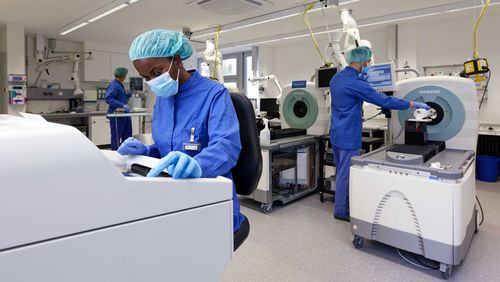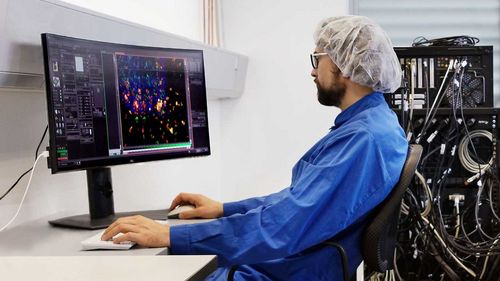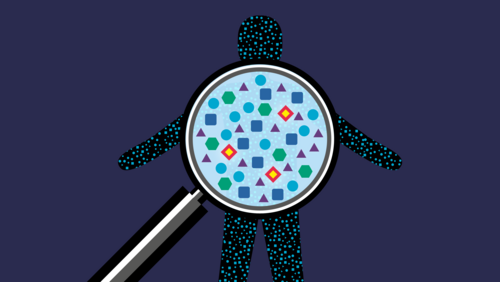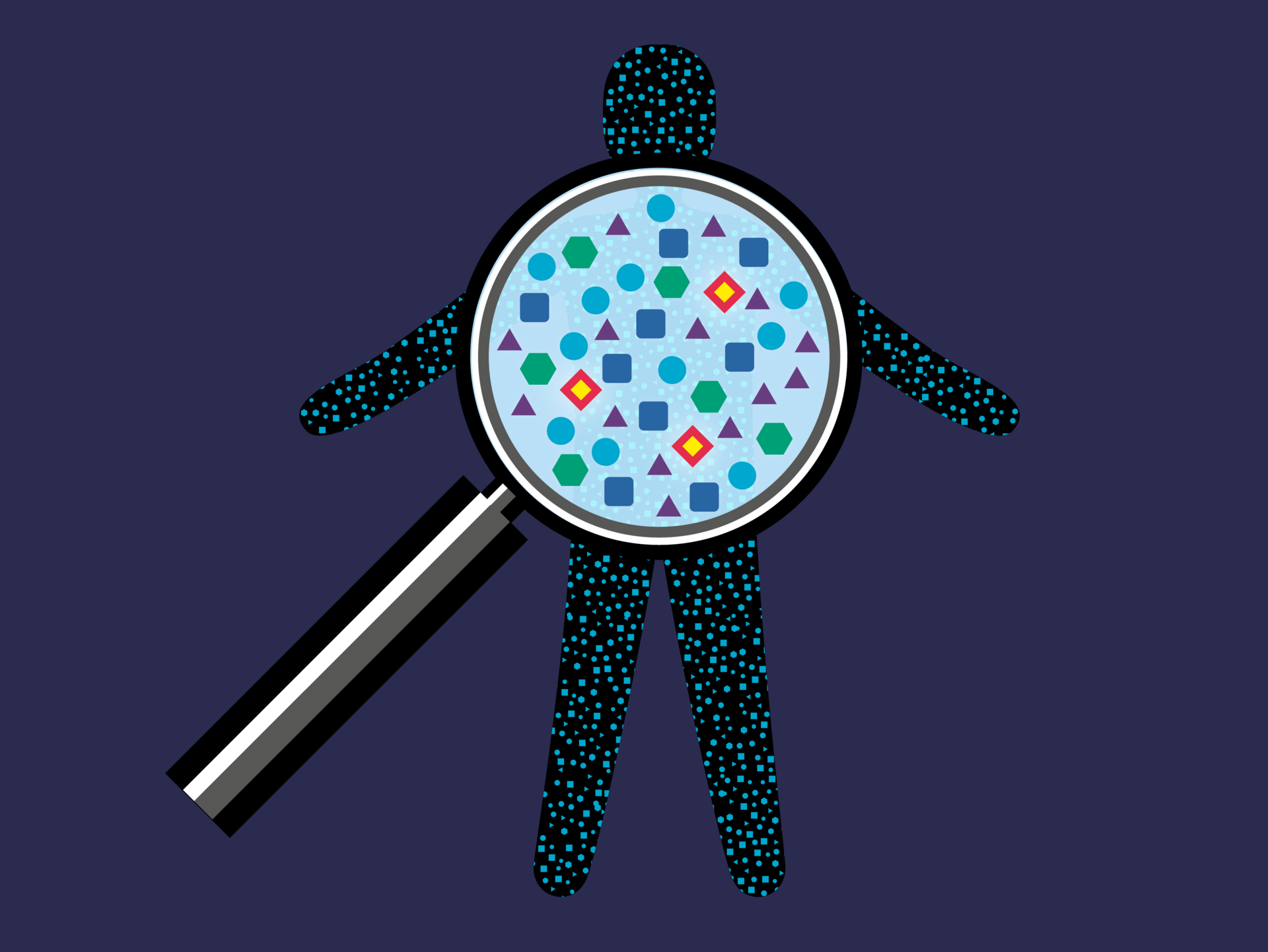
Disease markers in tissue and blood
At the Werner Siemens Imaging Center in Tübingen, Christoph Trautwein is using state-of-the-art spectroscopy methods to search for tiny molecules in tissue, blood, urine or cerebrospinal fluid. Called “metabolomics”, the new approach has the potential to deepen our knowledge of diseases like dementia, while also promoting early detection.
Be it sugar, fats or hormones: to function properly, our bodies rely on innumerable tiny molecules called metabolites, which are intermediate or end products of metabolic processes. Their exact composition differs from person to person and is determined by genetic factors, but also by age, diet and immune system health.
“Measuring individual metabolites like glucose, lactate or creatinine has long been part of established medical practice,” says Christoph Trautwein, group leader at the Werner Siemens Imaging Center (WSIC) in Tübingen. In the past decade, however, a new research field has begun to take shape, one that goes far beyond measuring a single molecule: metabolomics. The aim is to identify the complete set of metabolites—the metabolom—found in a cell or organism.
Various methods exist for measuring and quantifying metabolites, including nuclear magnetic resonance (NMR) spectroscopy, which Trautwein and his Tübingen research group are using in their work. In NMR, a powerful and uniform magnetic field is applied to excite atomic nuclei, causing their state to change. This then makes it possible for researchers to differentiate various kinds of molecules. “Normally we study samples extracted from tissue, blood serum or urine,” Trautwein says.
Dementia indicators
Concentrations of the different metabolites can serve as indicators of a disease. To illustrate: in a recently published study (1), Trautwein and his team extracted twenty-seven different metabolites from blood serum and forty-five from cerebrospinal fluid and subsequently examined the differences between healthy people and patients suffering from mild cognitive impairment or severe dementia. “We found significant and specific metabolites in each of these three groups,” Trautwein says. This means these kinds of metabolomic measurements could one day help detect dementia, especially as the method correlates well with already known Alzheimer’s disease indicators such as the amyloid beta peptide.
The researchers also believe that so-called lipoproteins—which transport fats and cholesterol in the body—could play an important role in detecting dementia. “We know that, as we age, lipoprotein metabolism can break down and cause atherosclerosis, high blood pressure and cardiovascular diseases,” Trautwein explains, adding, “It’s a factor in dementia and Parkinson’s.” Last year, he and his colleagues published a study (2) that identified clear differences in lipoprotein groups and subgroups between Alzheimer’s patients and healthy individuals.
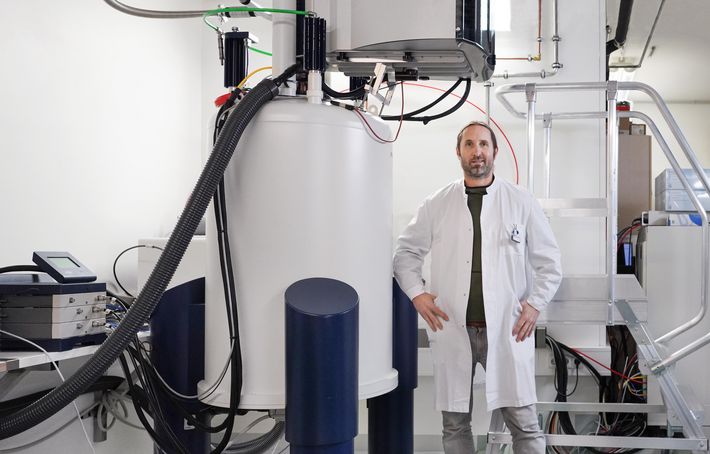
Even greater diagnostic possibilities
At present, the examinations are still mainly restricted to research settings. Nevertheless, as Trautwein points out, commercial enterprises have been trying to market these kinds of metabolic changes as biomarkers for the past few years now. Often the aim is to use this additional information to further enhance diagnostics. For example, differences in the lipoproteins subgroups could potentially indicate differences between Alzheimer’s, Parkinson’s and low blood pressure.
Trautwein says one great advantage of NMR metabolomics compared to other medical imaging techniques is that it allows a large number of samples to be examined very quickly. “We can easily take a blood or urine sample from a patient every day, and today’s fully automated spectroscopy devices can measure up to fifty samples a day.” What’s more: because the data are highly reproducible, comparability is ensured—making the method suitable for long-term monitoring. Currently, Trautwein and his group are involved in various studies that investigate how metabolite composition in blood serum (3) and urine (4) in acute and long Covid patients (5) differs and changes over time.
A key technology of tomorrow
Early detection programmes are another potential area of application for metabolomics: Trautwein envisions that our metabolomic profile will be part of our annual health check-up, which could be particularly relevant for cancer screenings. Along these lines, Trautwein’s team recently found major differences in the peritoneal fluid of the abdominal cavity (6) and in the blood serum (7) of patients with different grades of ovarian cancer.
He also points out that companies are interested in using these kinds of methods to create visual renderings of metabolic changes induced by lifestyle or diet. It would be a very attractive market: if a person’s poor diet has resulted in the growth of harmful gut bacteria, probiotics could be prescribed to restore a healthy balance.
Trautwein is convinced the coming years will see a rapid increase in our knowledge of these types of interrelationships. Right now, research groups across the globe are working on identifying the entire human metabolom. It’s a massive undertaking in which the biomaterial of several million people is being examined year after year. In future, the method will provide information about which concentrations are typical at which age for hundreds, even thousands of metabolites; it will also enable scientists to identify which metabolites are changed by certain diseases—and how. In sum, metabolomics looks to be evolving into a key technology in life sciences, and the Werner Siemens Imaging Center is playing a central part in the development.
Links to the studies
1) https://www.frontiersin.org/articles/10.3389/fnagi.2023.1219718/full
2) https://www.mdpi.com/1422-0067/23/20/12472
3) https://doi.org/10.1038/s43856-023-00365-y
(4) https://doi.org/10.1515/cclm-2023-1017
(5) https://doi.org/10.3389/fimmu.2023.1144224
